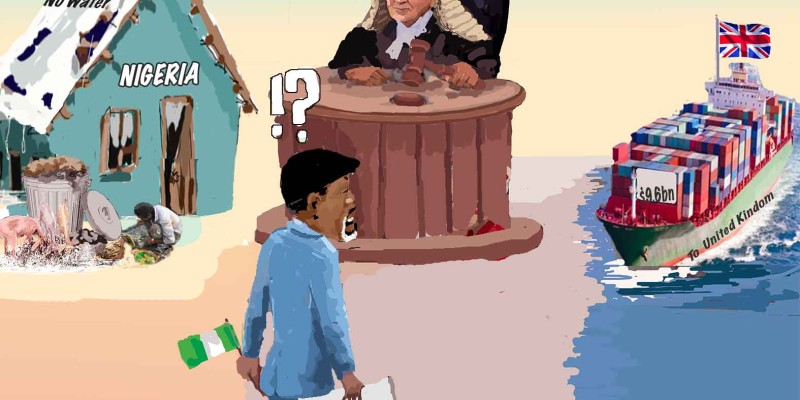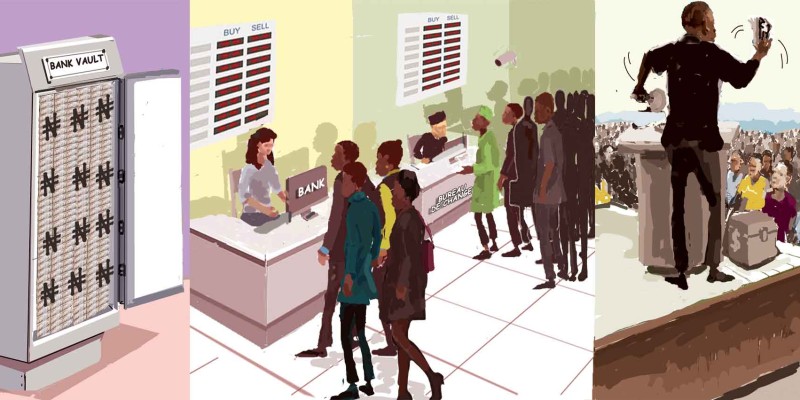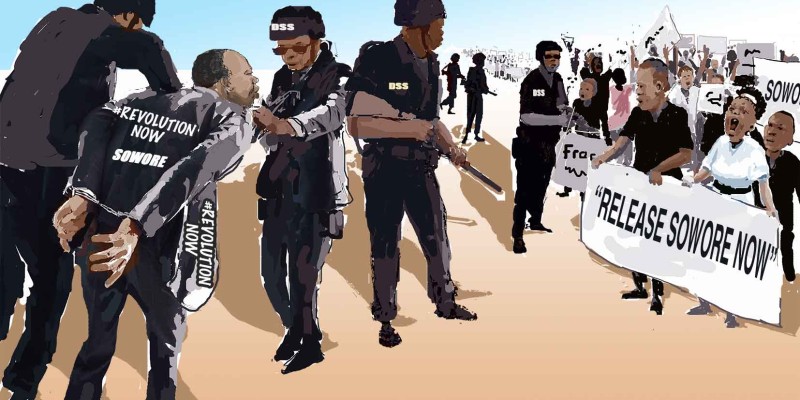KILLING THE POOR & DESPERATE WITH SHYLOCK RATES
By: Sir Henry Olujimi Boyo (Les Leba) first published in December 2018
INTRO:
Last week, this column republished “Debt, Debt Everywhere and Yet More Debt” The article addresses the magnitude of debt facing the nation despite increasing idle reserves. This republication can be found using the below link.
(See www.betternaijanow.com for this series and more articles by the Late Sir Henry Boyo)
Over the last few weeks, the republished articles discussed Nigeria’s debt situation which, four years later, remains an ongoing cause for concern. Today’s republication highlights the hardship that Nigerians have faced over the years, and continue to face in these dark economic times. The below article makes reference to various news publications to emphasize the dire situation that the Nigerian populace finds itself burrowed in. Let us take note of the fact that since this article was first published, Nigeria’s economic situation, and the plight of the everyday man has worsened but perhaps the more we learn, we as a people, could advocate for better governance, and for a nation that effectively utilizes its resources paving the way for prosperity to become a reality.
As you read through the below article taking note of previous events and rates, keep in mind its initial publication (2018).
“Those Micro-finance banks that we have today, are not ‘giving’ loans at single-digit interest rates”; for example, “You borrow N50,000 for 90 days and they expect you to pay another N50,000 interest to them in another 90 days. That is outrageous and that is too exorbitant...” besides, “If you don’t pay the N50,000 interest, they seize your bicycle, or your car or your machine.”(CBN Governor, Godwin Emefiele at a Press briefing in Lagos on Sunday 9th December 2018-see story titled “Microfinance Banks Charging Outrageous Interest Rates on Loans”, Punch edition of December 10, 2018).
Indeed, there are several media reports of the deep anguish and oppression endured by patrons of Microfinance Houses, as well as from registered and unregistered lenders nationwide. In retrospect, on May 15 2017, the Punch Newspaper, carried a story titled “Lagos Hairdresser Commits Suicide Over N150,000 Loan;” according to the report, “Yetunde Oladipupo, a Somolu resident, borrowed N150,000 from a Microfinance bank; however, when pressure became too much for her and she could not pay, she became desperate, and bought and drank “sniper” insecticide and died.”
Furthermore, a THISDAY report of April 13 2017, also catalogued an upsurge in suicides and attempted suicides in Lagos. One such attempt, was by a lady, identified as Abigail Ogunyinka, whose reason for wanting to jump off the Third Mainland bridge was that “I owe two Microfinance banks, one N60,000 and the other N90,000, and the banks have been troubling me.” In her own words, “I have looked all through and there is no help, I don’t want further embarrassment.” Fortunately, Abigail’s life was saved by her house help, whom she had taken with her, to the bridge, as a witness to her planned suicide.
Similarly, in the same THISDAY report, a Lagos based Bank Manager, Olisa Nwakoby, also reportedly shot and killed himself, because, he was under pressure to repay a huge loan, he had obtained from his bank.
In a related incident, on December 11 2018, the Punch Newspaper also carried the story of a N30m loan from a company called “Smart Links Services” to the registered Trustees of “World Evangelism Incorporated” in August 2016, for the purpose of Church expansion, with a promise to repay “within 2 months with an interest rate of 30 percent;” (that is by extension, an outrageous and possibly suicidal, 180 percent interest per annum)!
Although, in Lagos, on Sunday 9th December 2018, the CBN Governor specifically targeted the oppressive high cost of loans from Microfinance banks in his Press briefing, nonetheless, the larger and more respectable Money Deposit Banks, are not also free from blame on this matter of very disenabling and distortional high interest rates.
In practice, cost of loans, from Nigerian banks, presently range between 17 to close to 30 percent! This is in comparison with between 3-7 percent in more successful economies, where money supply is, more efficiently managed to restrain inflation, below a benchmark of say 3 percent. Invariably, with such high cost of borrowing, Nigerian businesses would hardly be competitive when compared with countries where investors access much cheaper loans. Arguably, business survival becomes seriously challenged, with 17-30 percent interest rates, in contrast to below 7 percent rate in more successful economies, particularly, when critical public infrastructure, which facilitate industrial growth and output, are also funded by the respective investors internally.
Furthermore, if Medium and Large-Scale Corporations are clearly hamstrung with loans which attract between 17-30 percent annual interest, then it would be near impossible, for clearly weaker, small or micro enterprises to survive, with over 10 percent monthly interest on their loans. The obvious question must be, why poorer, smaller and weaker ‘companies’ pay much more to borrow than the much stronger and bigger corporations and multinationals? Notably, however, the problem of high and oppressive cost of funds is obviously not, peculiar to the Microfinance or Micro Enterprises subsector, as the CBN Governor would seem to suggest, in his recent Press briefing.
The question therefore, is, why cost of borrowing in Nigeria’s formal and informal money markets is, significantly, out of sync with below 7 percent best practice rates, in more successful economies elsewhere; why also is CBN unable to induce single-digit rates for all sectors despite the obvious imperative for cheaper loans to stimulate businesses and create jobs?
Regrettably, this is a question that no Central Bank Governor or Finance Minister, in Nigeria, has been able to give a satisfactory answer to in almost 20 years!! Indeed, in her answer to the question of high interest rates in a THISDAY interview, some months before the change of Government in 2015, the former Co-ordinating Minister of the Economy and Finance Minister, surprisingly feigned ignorance of why this is so! Although Dr. Okonjo Iweala, promised to interrogate the unyielding challenge of Nigeria’s high interest rates with the incumbent CBN Governor, unfortunately, however, Nigerians never got feedback on this matter until her government ceased to be in power.
The preceding might suggest to the uninitiated that high interest rates are independently determined by ‘unknown’ forces, outside anyone’s control; but, this will be far from the truth. In practice, interest rate, is usually a direct function of inflation; thus, when inflation rises, the rate of interest on loans will also rise in sympathy. The bottom line, obviously, is that it would be clearly, foolhardy for anyone to lend money at a rate below the inflation rate; if annual inflation rate is 20 percent for example; a N1m loan with 10 percent annual interest rate, would actually turn out to be a loss when N1.1m is paid back, a year hence; ultimately, the real value of N1.1m received, twelve months later, will actually be below N900,000.
The plausible approach to lower and industrially supportive interest rates with stable investment environment, would be to significantly reduce the level of inflation. Invariably, the pertinent follow-up question, will also be how inflation can be managed? Instructively, it is usually learned at the primary level of Economics, that “when more money chases fewer and fewer goods and services, the price level would rise.” Consequently, the management of inflation, implies control of money supply (both cash and credit) in the money market; invariably, an expansion in money supply, would sustain an inflationary spiral with all the well-known adverse consequences on personal income, welfare and savings, and ultimately, also impact the level of investment and employment negatively.
Although Emefiele did not suggest how interest rates, across board, for all business segments can be brought down to single-digit, the CBN Governor, however, indicated that, in order to bring cheaper loans to small and micro businesses, which reportedly account for well over 50 percent of the employed workforce, a National Microfinance Bank (NMC) would be established directly, under CBN management to induce better and cheaper access to credit, even if, according to him, “the applicable interest rate from the NMC exceeds single-digit and approaches 15 percent per annum.”
Nonetheless, if the result of, earlier, similar CBN sectoral intervention is anything to go by, the failure of the proposed National Microfinance Bank is probably already foretold. Indeed, according to the CBN Governor, at the December 2018 Press briefing, there are already many funds targeted at small holder farmers as well as those who are into small businesses in Nigeria. According to Emefiele“Under the Central Bank”, “We already have the agricultural Credit Guarantee Scheme; we also have N200bn set aside for SMEs; furthermore, under the Central Bank and the Bankers’ Committee, we currently have close to N60bn available to fund agriculture and small businesses, and yet these monies are lying there and have not been distributed!”
Instructively, however, the excess money supply, which drives higher inflation rates will not be efficiently managed, unless CBN stops substituting distributable forex revenue with Naira allocations to government!
SAVE NAIRA, SAVE NIGERIANS!!







